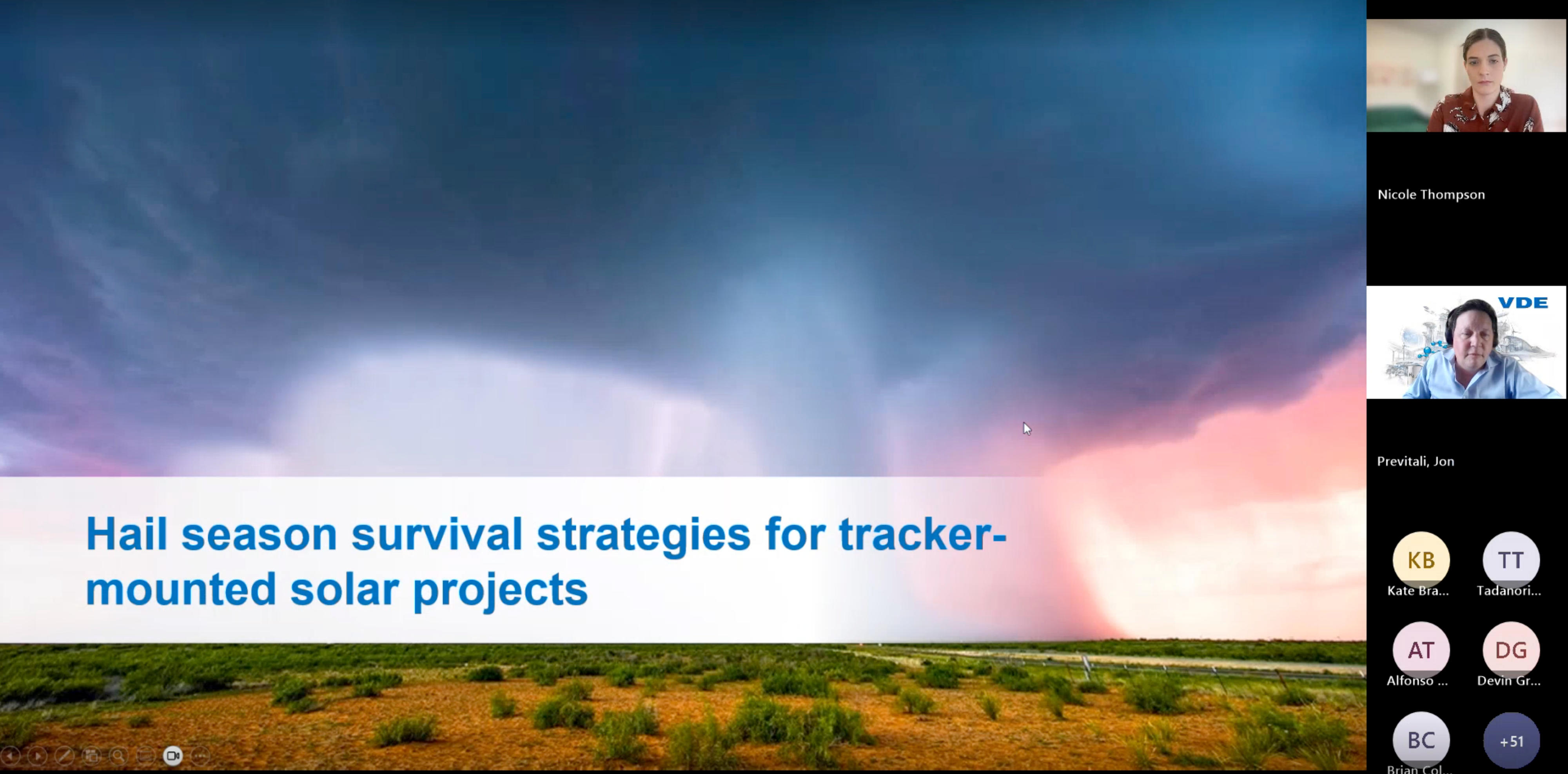
[Video] Hail season survival strategies for tracker-mounted solar projects
About this virtual "lunch and learn"

Who is presenting?
Jon Previtali is the vice president of digital services and product manager for hail risk intelligence at VDE Americas. He is a 20-plus-year veteran of the solar power industry who has worked in project development, operations, asset management, finance, and engineering.
Nicole Thompson is a Senior Manager of Data Science kWh Analytics. Prior to joining the team, Nicole worked as a Data Scientist at an AI company where she developed explainable industrial AI solutions, with a focus on reasoning algorithms.
Why is this important?
Based on a recent claims data analysis, kWh Analytics estimates that hail accounts for 6% of solar project insurance claims by volume—but more than 70% of losses by dollar amount. Meanwhile, climate scientists warn that anthropogenic warming may increase the frequency and severity extreme weather events.
In May 2019, a severe hailstorm in West Texas damaged more than 400,000 modules at the Midway Solar farm, resulting in losses on the order of 70 million dollars. In 2022, Business Insurance magazine reported that “U.S. renewable energy insurers are expected to pay out more than 300 million dollars in claims” resulting from the hail season in Texas. Most recently, a 1-in-500-year hail event in March 2024 reportedly caused insured losses in excess of a 50 million dollar sublimit at the Fighting Jays Solar Farm.
Though some solar project locations will inevitably experience severe hail events, catastrophic project losses are not inevitable. Financial loss models and forensic investigations clearly demonstrate that hail risk is not an insurmountable barrier solar project development.
Even in hail-exposed locations like Texas, solar project stakeholders can limit catastrophic loss events and right-size insurance premiums and coverage with better technical literacy, due diligence, and risk mitigation practices.
Join us to learn how VDE Americas and kWh Analytics are empowering solar project stakeholders to better protect critical energy assets, ensuring sustainable investment returns, insurable assets, and a worthwhile future.
What will you learn about?
- Market and technology trends effecting hail risk exposure
- Population and claims history bias in FEMA's hail risk maps
- Project design details that drive hail vulnerability or resiliency
- Best practices for solar project hail monitoring and stow
- Automating and operationalizing effective hail defenses
- Modeling production losses due to proactive hail stow
- The upfront cost of implementing hail-resilient designs
- How resiliency measures can reduce insurance premiums
- Right-sizing severe convective storm insurance sublimits
- Documenting hail resiliency strategies for insurers
How do I watch the recording?

